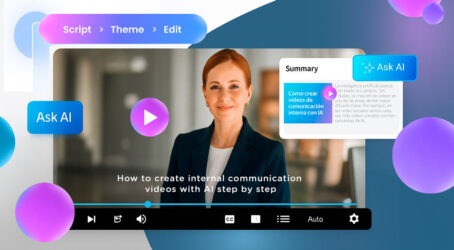Immerse yourself in the world of mentoring and discover its power to boost professional development through intergenerational work. Let’s explore how connecting the generations will strengthen the organizational culture and enhance the growth of your employees.
What is mentoring?
Ever wanted to learn more from someone who taught you something new? That is the essence of mentoring, where learning flows naturally. That’s why it is key to create the conditions and plan a ‘master/apprentice’ process in the organization.
Mentoring involves someone with more experience (the mentor) guiding and supporting someone with less experience (the mentee) in their professional development. Unlike coaching, which focuses on specific tasks, mentoring focuses on long-term growth and holistic development.

Mentoring: connecting the generations for professional development
Mentoring is a millenary practice, however the novelty is that now we can apply it directly in our organization promoting intergenerational relationships.
Mentoring and Reverse Mentoring: Empowering Professional Development
Throughout professional history, the notion has been held that older generations had a responsibility to pass on their extensive experience and knowledge to new generations.
Today, this perspective has evolved and the strategy of “reverse mentoring” has been created, recognizing the valuable potential of generation “Y” and generation “Z”, to also teach and contribute to the development of generations such as “Silver”.

Fuente: iStockphoto/Sanja Radin
Building generational bridges in mentoring
While the results of the Deloitte survey ensure that 94% of mentors of millennials develop good mentoring, it is time to go a step further and think about intergenerational work, taking into account that the “Digital Natives” and the “Internet Generation” have too much to contribute to organizations because they grew up with the advancement of digital media and the launch of new technologies.
How to implement mentoring?
To begin with, strategic planning from the People area is crucial, followed by consistent dissemination from Internal Communication. These areas are key pillars for cultivating an environment of continuous development.
By establishing mentoring programs, the exchange of knowledge and experience between generations is encouraged.
4 reasons to implement mentoring
- Fostering a culture of continuous learning: Encouraging a culture of constant learning is crucial for team growth and competitiveness in today’s marketplace.
- Talent development and employee retention: offering growth prospects improves job satisfaction and creates a steady flow of internal leaders.
- Promoting better communication and collaboration: Establishing mentoring relationships fosters a more open and collaborative work environment.
- Alignment with organizational objectives: Mentoring programs are designed to support the organization’s strategic objectives.
Areas of interaction and implementation process
People is committed to the professional and personal growth of employees, ensuring that mentor assignments are made strategically to maximize their impact. On the other hand, Internal Communication encourages interaction between mentors and mentees, ensuring that the program is aligned with organizational values and objectives.
From the establishment of this framework, it is crucial to follow this series of steps to ensure successful implementation:
- Defining objectives and goals: Before implementing a mentoring program, it is essential to establish clear objectives and goals. What is the program intended to achieve? It may be the development of specific skills, the promotion of diversity or the strengthening of the corporate culture.
- Selecting mentors and mentees: Choosing the right mentors and mentees is crucial. Mentors must possess the experience, empathy and willingness to guide, while mentees must be committed to their own growth.
- Establishing guidelines and expectations: Both parties must have a clear understanding of their roles and responsibilities. This includes frequency of meetings, confidentiality and topics to be discussed.
- Provision of training and resources: both mentors and mentees can benefit from training and resources to ensure the effectiveness of the program. This may include workshops, guides and access to learning tools.
- Progress monitoring and evaluation: Regular evaluation of progress and feedback are critical to the success of the program. This may include surveys, interviews and tracking of goals achieved.
- Alignment with the overall business strategy: the mentoring program should align with the company’s overall strategy, including the vision, mission and long-term goals. This ensures that the program contributes to the success and growth of the organization.

If your organization is willing to carry out a mentoring program that promotes intergenerational relationships, do not hesitate to contact us for advice!




